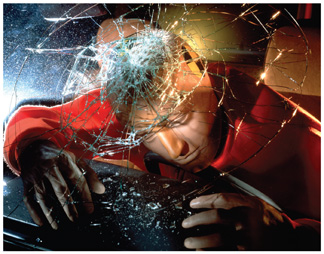 Did the claimant sustain a head injury in the incident? Would the diagnosed head injury have been prevented if the claimant was using a protective device such as a helmet, seat belt, or airbag? Biomechanical engineers frequently answer injury causation and prevention questions like these in personal injury claims.
Did the claimant sustain a head injury in the incident? Would the diagnosed head injury have been prevented if the claimant was using a protective device such as a helmet, seat belt, or airbag? Biomechanical engineers frequently answer injury causation and prevention questions like these in personal injury claims.
During the course of an investigation, biomechanical engineers may compare the forces or accelerations experienced by the head in an incident to those required to cause the diagnosed injury. The incident forces/accelerations are calculated through reconstruction of the event, and the forces/accelerations required for the injury are typically determined from published experimental data. If the forces/accelerations in the incident are of the magnitude required for the injury, then the injury is likely consistent with the incident; however, if they are not, then the injury likely is not consistent with the incident.
This type of professional analysis can be useful when injuries like concussion or mild traumatic brain injury (MTBI) are being claimed. The terms concussion and MTBI are typically used to describe the same injury and are often used interchangeably. Concussion is difficult for medical doctors to diagnose because objective evidence of the injury can be lacking. Recent media attention on concussion in football and other sports highlights the significant short- and long-term effects these injuries can have as well as the controversies surrounding proper diagnosis and treatment.
Recommended For You
Want to continue reading?
Become a Free PropertyCasualty360 Digital Reader
Your access to unlimited PropertyCasualty360 content isn’t changing.
Once you are an ALM digital member, you’ll receive:
- Breaking insurance news and analysis, on-site and via our newsletters and custom alerts
- Weekly Insurance Speak podcast featuring exclusive interviews with industry leaders
- Educational webcasts, white papers, and ebooks from industry thought leaders
- Critical converage of the employee benefits and financial advisory markets on our other ALM sites, BenefitsPRO and ThinkAdvisor
Already have an account? Sign In Now
© 2025 ALM Global, LLC, All Rights Reserved. Request academic re-use from www.copyright.com. All other uses, submit a request to [email protected]. For more information visit Asset & Logo Licensing.








